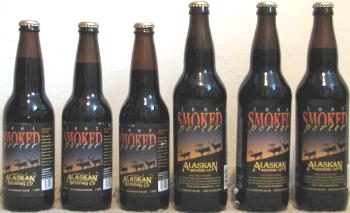Today is the 75th Anniversary(1) of the repeal of Prohibition in the United States. In addition to my odd fascination with weird geography, I’m a horrible beer snob(2) and sometimes I even find ways to tie my fascination with beer and geography together. So I think of this as a big day for Twelve Mile Circle. I will enjoy this milestone in the proper manner to recognize it.

Complications
Prohibition fever spread across the United States at the turn of the last century. It became reality with the ratification of the eighteenth amendment to the Constitution and went into effect on January 29, 1920 along with its companion Volstead Act. I won’t dwell on that bleak time; rather, I’ll focus on the geographic fallout of the twenty-first amendment which repealed the earlier amendment in its entirety. Those wheels started rolling 75 years ago today, on December 5, 1933, when these magic words enshrined themselves within the Constitution:
Section 1. The eighteenth article of amendment to the Constitution of the United States is hereby repealed
Much of the citizenry felt deliriously overjoyed at the prospect. However, not all parts of the nation embraced this turn of events with universal regard. The next part of the amendment addressed those concerns:
Section 2. The transportation or importation into any State, Territory, or possession of the United States for delivery or use there in of intoxicating liquors, in violation of the laws thereof, is hereby prohibited.
So, in spite of conventional wisdom, the amendment didn’t actually end prohibition. Rather, it allowed individual states to decide what worked best for them. States reflected an entire spectrum of beliefs ranging from great tolerance to total abhorrence. Thus a state could impose prohibitions and restrictions with popular support. Mississippi didn’t end prohibition until 1966, for example, and Kansas didn’t allow liquor sales by-the-drink until 1987.
Variations
Naturally a complicated hodgepodge of different regulations and enforcement mechanisms developed over time. Wikipedia’s “Alcohol laws of the United States by state” provides a basic summary of the situation. But that only scratched the surface. Some of the more unusual variations I found:
- Arizona allows drive-through liquor stores
- You can’t buy alcohol in Indiana on election day until the polls close
- Louisiana allows municipalities to determine whether open containers are acceptable; in New Orleans it’s fine but only in a plastic cup
- Massachusetts bans the entire concept of Happy Hours
- Missouri doesn’t have a public intoxication law, and Nevada expressly prohibits such a law
- Only state controlled stores sell beer above 3.2% alcohol by weight in Utah (with a loophole for production breweries)
- In the District of Columbia, stores cannot sell single beers intended for off-premise consumption
State Control
A Virginia ABC Store in Arlington – Owned and Operated by the Commonwealth
Many states decided to allow alcohol within their borders only grudgingly, and only if they could remain strictly in charge so they could blunt the temptations for their more impulsive citizens. The concept of the Alcoholic Beverage Control board arose from this environment, including the state monopoly on the sale of liquor, and in some cases beer and wine too.
The strictest of these so-called control states operate the dreaded ABC stores. Those are state-owned and operated liquor stores with all the ambiance of something right out of the old Soviet Union. In one instance the monopoly transcends all the way down to the county level: Montgomery County, Maryland.
Dry Counties

Prohibition still exists today at the county and town level in hundreds places throughout the country. “Dry Counties” exist in many states but they do tend to cluster around the southern tier. Ironically, one of those is Moore County, Tennessee, the location of the massive Jack Daniel distillery. All of these crazy laws, regulations and permutations may be wildly inconsistent but it sure beats the alternative. So make sure you raise a glass tonight and celebrate the end of prohibition.
12MC Loves Footnotes!
(1) I’m not really sure what to call the 75th Anniversary. If it were 70 years is would be the Platinum Anniversary. Diamonds serve as an appropriate gift for the 75th Anniversary but that’s also the case with anything 60 and over so it hardly seems special. I did come across a website that advertised “Sensual 75th Anniversary present ideas – give the gift that shows you have the spark.” I really didn’t want to know more about that so I left. Quickly. It seemed to me that any couple reaching their 75th Anniversary would be more concerned with simply breathing but, hey, more power to ’em.
(2) Think wine snob, except replace the wine with rare, unusual or ultra-high-end beers. A vertical tasting of several years of Alaskan Smoked Porter might be an example.

Leave a Reply